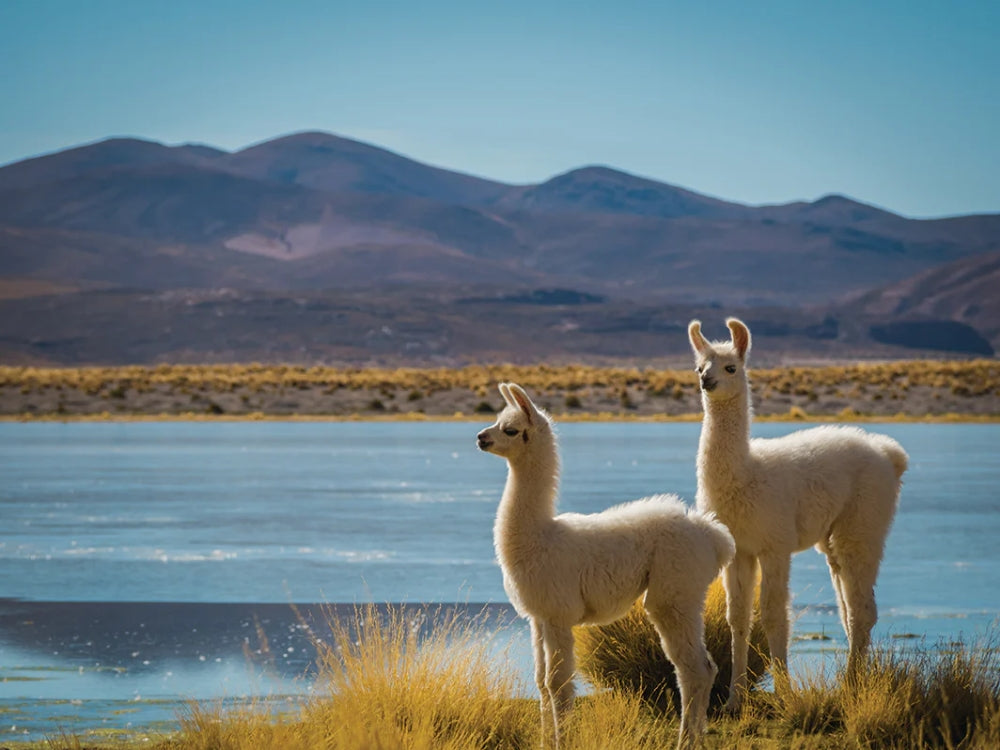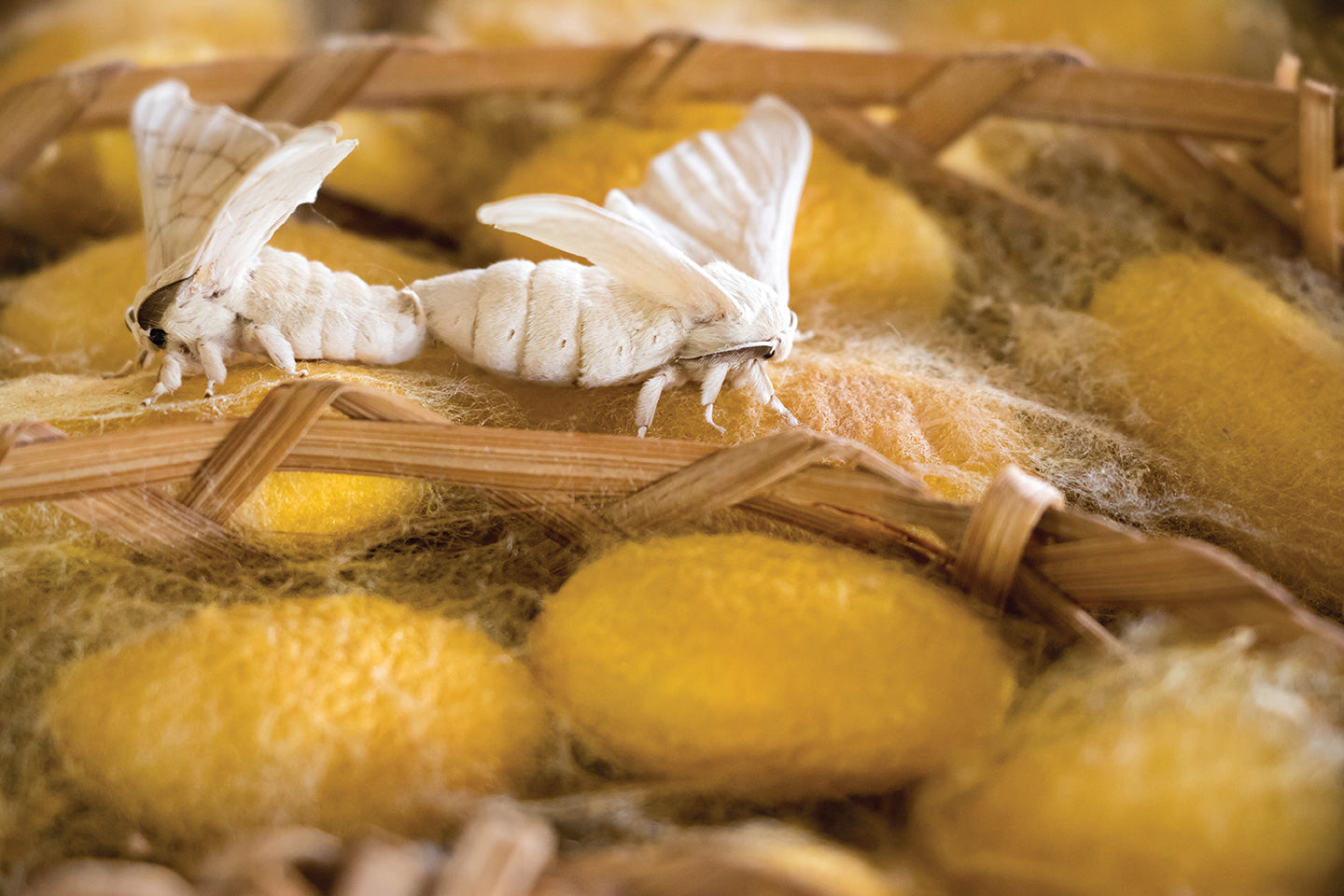
Step into the realm of animal and luxury fibers as we explore their origins, characteristics, and versatile applications. From the delicate allure of cashmere to the opulence of silk, these fibers bring unparalleled softness and elegance to any project. Join us on a journey through the world of textiles, where we uncover the stories behind these remarkable materials cherished by artisans and fiber enthusiasts worldwide. Discover the wonders of animal and luxury fibers and unlock a world of endless creative possibilities.
Alpaca
Name : Alpaca (Vicugna pacos)
Origin : Andes (Peru, Bolivia, Ecuador, Chile)
Micron Range : 18 - 35
Alpaca is a camelid mammal. Alpaca fibre is similar to wool but much softer and silkier for the same micron. It is available in over 30 natural colours. Alpaca is lanolin and grease free and is hypoallergenic (does not cause skin itching). Alpaca is popular for making apparels.
Mohair
Name : Mohair (Capra aegagrus hircus)
Origin : South Africa, USA, Turkey, Argentina etc.
Micron Range : 23-40
Mohair is derived from Angora goat. It is noted for its high lustre and sheen. It has silky feel. Dyes exceptionally well. Has good moisture wicking properties and is crease resistant. It is considered as luxury fibre and used for apparels, carpets and outdoor fabric.
Angora
Name : Angora Rabbit (Oryctolagus cuniculus)
Origin : Turkey (Angora Farms : Europe, China, Japan, Korea, Russia, India and many other nations.)
Micron Range : 8 - 20
Angora is a fluffy fibre produced by Angora Rabbit (not to be confused with Angora goat which gives mohair). The fibre is soft and very light. Normally blended with wool or other fibres. It is used in sweaters and apparels.
Cashmere
Name : Cashmere (Capra aegagrus hircus)
Origin : China, Mongolia, Tibet, Afghanistan, Iran, Turkey, Kyrgyzstan etc.
Micron Range : 14 - 19
Cashmere is a luxury fibre obtained from goats. The word comes from Indian region of Kashmir known for its famous shawls. It is finer, stronger, lighter, softer and 3 times warmer than wool. China and Mongolia are the leading producers of Cashmere.
Pashmina (Indian Cashmere)
Name : Pashmina (Capra aegagrus hircus)
Origin : Ladakh (India)
Micron Range : 12 - 15
Pashmina is the true cashmere from Ladakh, India. It is the world's finest cashmere derived from Changthangi goat. It is ultra soft, ultra warm, light weight, popularised by Kashmiri artisans who spin the yarn by hand and make shawls on handloom.
Silk
Name : Silkworm (Bombyx mori)
Origin : India, China, Bangladesh, Malaysia, Uzbekistan, Brazil, Iran, Thailand, North Korea, Vietnam, Japan, Romania etc.
Micron Range : 5 - 25
Silk is the ancient super luxury fibre and the most sought after possession for centuries. Silk route has been famous for 1000s of years. Silk is one of the strongest natural fibers. It is smooth and soft, but not slippery. Silk is the natural reference for denier. One strand of silk is approximately one denier (9000 mtrs. of one silk strand weighs approx. 1 gram).
Merino
Name : Merino (Ovis Aries)
Origin : Australia, Spain, Uruguay, parts of Africa and other nations in small numbers.
Micron Range : 12 - 24
Merino breed of sheep is prized for its wool. 85% of the world's merino wool comes from Australia. It's known for its softness, luster, warmth and is widely used for knitwear and apparel industry. Merino within the sheep wools is considered high end wool for various purposes.
Name : Llama (Lama glama)
Origin : Andes (Peru, Bolivia, Ecuador, Chile)
Micron Range : 20 - 40
Llama is a camelid closely related to Alpaca. Their fibre is soft and lanolin free. Available in natural colours, generally coarser than Alpaca. The fibre is warm and soft, hypoallergenic.
Name : Muskox (Ovibos moschatus)
Origin : Greenland, Alaska, Canadian Arctic, Russia, Sweden
Micron Range : 13 - 18
Qiviut is the inner wool of Muskox. It is stronger and warmer than sheep wool, softer than Cashmere. It is naturally shrink resistant. It is extremely warm, non-irritating to skin and expensive.
Yak
Name : Yak (Bos grunniens)
Origin : India, Tibet, Mongolia & Central Asia
Micron Range : 16 - 90
Yak fibre has been used by nomads in Himalayas for more than 1000 years for apparels, ropes and blankets. The down fibre 16-24 microns is soft, very warm, premium fibre used for apparels and clothing. It has high degree of heat insulation and better lustre than wool. The coarser microns are used for tents, ropes, blankets etc.
Name : Tibetan antelope / Chiru (Pantholops hodgsonii)
Origin : India, Tibet
Micron Range : 7 - 11
Shahtoosh is a Persian word meaning "King of Wools". Microns range from 7-11. It is sourced from Tibetan antelope (Chiru) and is now banned due to over exploitation in Ladakh. It is the world's most expensive natural animal fibre. Shahtoosh shawls have been made since centuries by Kashmiri artisans in India. They are so fine that a shawl can pass through a wedding ring and is prized as the most expensive apparel in the world.
Vicuna
Name : Vicuna (Vicugna Vicugna)
Origin : Andes (Peru, Bolivia, Ecuador, Chile)
Micron Range : 6 - 12.5 (mostly 12-12.5)
Vicuna is relative of Llama camelid, generates extremely fine wool in small amounts. Vicuna is very warm, has hollow insulating fibers, generally not dyed, used as natural colour. Vicuna is used for super luxury fabrics and apparels. It is considered as one of the most expensive natural fibre.
In conclusion, the realm of animal and luxury fibers offers a captivating array of materials that ignite the imagination and elevate the artistry of fiber crafts. Whether you're drawn to the warmth and softness of natural fibers or the indulgence of luxurious materials, exploring these fibers opens up a world of creativity and refinement. Embrace the beauty of these remarkable fibers and let your creative endeavors be enriched by their exceptional qualities.














Leave a comment